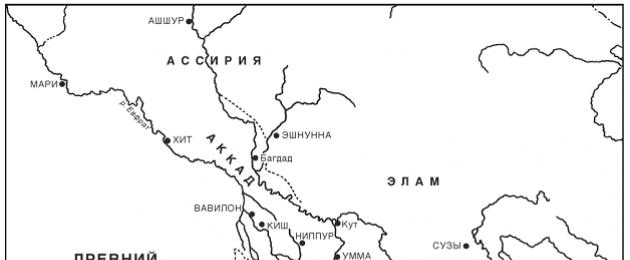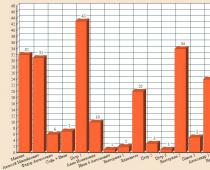The Sumerians are the first civilization on earth.
The Sumerians are an ancient people who once inhabited the territory of the valley of the Tigris and Euphrates rivers in the south of the modern state of Iraq (Southern Mesopotamia or Southern Mesopotamia). In the south, the boundary of their habitat reached the shores of the Persian Gulf, in the north - to the latitude of modern Baghdad.
For a whole millennium, the Sumerians were the main actors in the ancient Near East.
Sumerian astronomy and mathematics were the most accurate in the entire Middle East. We still divide the year into four seasons, twelve months and twelve signs of the zodiac, measure angles, minutes and seconds in sixties - the way the Sumerians first began to do it.
When we go to see a doctor, we all ... receive prescriptions for medicines or advice from a psychotherapist, completely without thinking about the fact that both herbal medicine and psychotherapy first developed and reached a high level precisely among the Sumerians. While receiving a subpoena and counting on the justice of judges, we also do not know anything about the founders of legal proceedings - the Sumerians, whose first legislative acts contributed to the development of legal relations in all parts of the Ancient World. Finally, thinking about the vicissitudes of fate, lamenting the fact that we were cheated at birth, we repeat the same words that the philosophizing Sumerian scribes first brought to clay - but hardly even guesses about it.
The Sumerians are "black-headed". This people, who appeared in the south of Mesopotamia in the middle of the 3rd millennium BC from nowhere, is now called the "progenitor of modern civilization", and in fact, until the middle of the 19th century, no one even knew about him. Time has erased Sumer from the annals of history and, if not for linguists, perhaps we would never have known about Sumer.
But I'll probably start from 1778, when the Dane Carsten Niebuhr, who led an expedition to Mesopotamia in 1761, published copies of a cuneiform royal inscription from Persepolis. He was the first to suggest that the 3 columns in the inscription are three different types of cuneiform writing containing the same text.

In 1798, another Dane, Friedrich Christian Münter, hypothesized that the writing of the 1st class is alphabetic Old Persian writing (42 characters), the 2nd class is a syllabary, the 3rd class is ideographic characters. But the first to read the text was not a Dane, but a German, a Latin teacher in Göttingen, Grotenfend. His attention was attracted by a group of seven cuneiform characters. Grotenfend suggested that this word is King, and the rest of the signs were selected based on historical and linguistic analogies. Eventually Grotenfend made the following translation:
Xerxes, great king, king of kings
Darius, king, son, Achaemenid
However, only 30 years later, the Frenchman Eugene Burnouf and the Norwegian Christian Lassen found the correct equivalents for almost all cuneiform signs of the 1st group. In 1835, a second multilingual inscription was found on a rock in Behistun, and in 1855, Edwin Norris managed to decipher the 2nd type of writing, which consisted of hundreds of syllabic characters. The inscription turned out to be in the Elamite language (nomadic tribes called Amorites or Amorites in the Bible).

With the 3rd type, it turned out to be even more difficult. It was a completely forgotten language. One sign there could denote both a syllable and a whole word. Consonants appeared only as part of a syllable, while vowels could also appear as separate characters. For example, the sound "p" could be rendered in six different characters, depending on the context. On January 17, 1869, the linguist Jules Oppert stated that the language of the 3rd group is .... Sumerian ... This means that the Sumerian people must also exist ... But there was also a theory that it was only artificial - "sacred language "priests of Babylon. In 1871, Archibald Says published the first Sumerian text, the Shulgi royal inscription. But it was not until 1889 that the definition of Sumerian was universally accepted.
SUMMARY: What we now call the Sumerian language is actually an artificial construction built on analogies with the inscriptions of the peoples who adopted the Sumerian cuneiform - Elamite, Akkadian and Old Persian texts. And now remember how the ancient Greeks distorted foreign names and evaluate the possible reliability of the sound of "restored Sumerian". Strangely, the Sumerian language has neither ancestors nor descendants. Sometimes Sumerian is called "the Latin of ancient Babylon" - but one must be aware that Sumerian did not become the progenitor of a powerful language group, only the roots of several dozen words remained from it.
Appearance of the Sumerians.
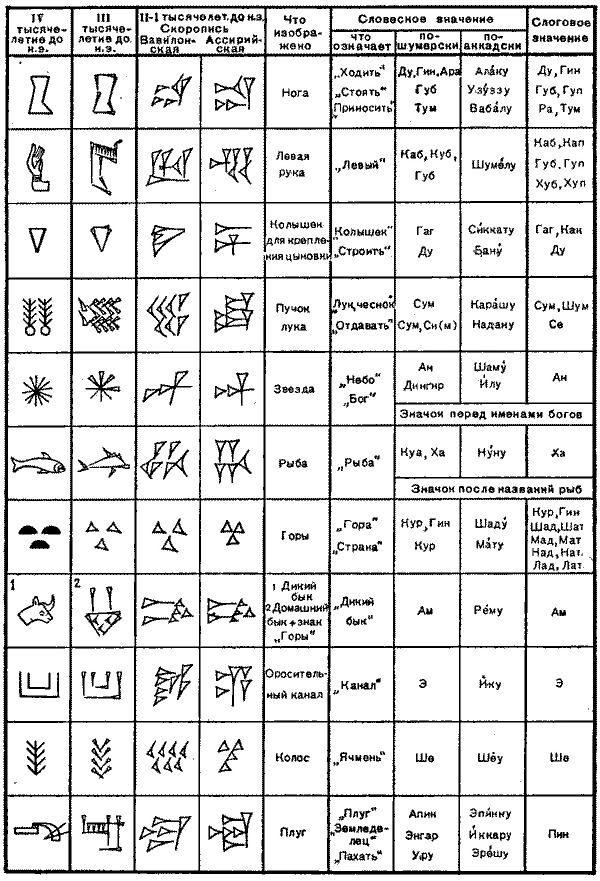
I must say that southern Mesopotamia is not the best place in the world. The complete absence of forests and minerals. Swampiness, frequent floods, accompanied by a change in the course of the Euphrates due to low banks and, as a result, the complete absence of roads. The only thing that was in abundance there was reed, clay and water. However, in combination with fertile soil fertilized by floods, this was enough for the first city-states of ancient Sumer to flourish there at the very end of the 3rd millennium BC.
We do not know where the Sumerians came from, but when they appeared in Mesopotamia, people already lived there. The tribes that inhabited Mesopotamia in the deepest antiquity lived on islands that towered among the swamps. They built their settlements on artificial earth embankments. Draining the surrounding swamps, they created the oldest system of artificial irrigation. As the finds in Kish indicate, they used microlithic tools.
An impression of a Sumerian cylinder seal depicting a plow. The earliest settlement discovered in southern Mesopotamia was near El Obeid (near Ur), on a river island that rose above a swampy plain. The population living here was engaged in hunting and fishing, but was already moving to more progressive types of economy: to cattle breeding and agriculture.
The El Obeid culture has existed for a very long time. It has its roots in the ancient local cultures of Upper Mesopotamia. However, the first elements of Sumerian culture are already appearing.
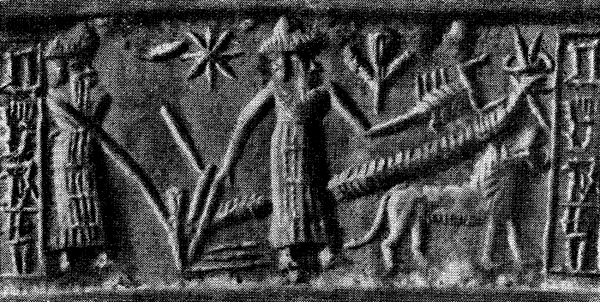
According to the skulls from the burials, it was determined that the Sumerians were not a monoracial ethnic group: there are also brachycephals ("round-headed") and dolichocephaly ("long-headed"). However, this could also be the result of mixing with the local population. So we can't even assign them to a particular ethnic group with complete certainty. At present, it can only be stated with some certainty that the Semites of Akkad and the Sumerians of southern Mesopotamia differed sharply from each other both in their appearance and in language.
In the most ancient communities of the southern part of Mesopotamia in the third millennium BC. e. almost all the products produced here were consumed locally and subsistence farming reigned. Clay and reed were widely used. In ancient times, vessels were molded from clay - first by hand, and later on a special potter's wheel. Finally, the most important building material was made from clay in large quantities - brick, which was prepared with an admixture of reeds and straw. This brick was sometimes dried in the sun, and sometimes fired in a special kiln. By the beginning of the third millennium BC. e., include the oldest buildings built of original large bricks, one side of which forms a flat surface, and the other - a convex one. A major revolution in technology was made by the discovery of metals. One of the first metals known to the peoples of southern Mesopotamia was copper, whose name is found in both Sumerian and Akkadian. A little later, bronze appeared, which was made from an alloy of copper with lead, and later with tin. Recent archaeological discoveries indicate that already in the middle of the third millennium BC. e. in Mesopotamia, iron was known, obviously meteoric.
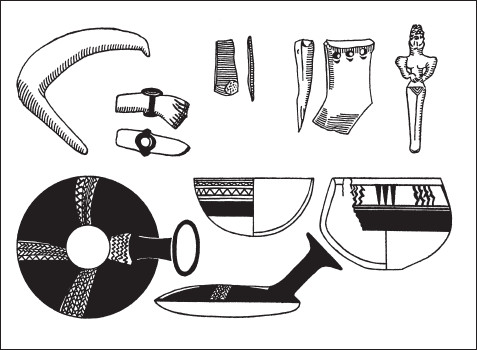
The next period of the Sumerian archaic is called the Uruk period, after the site of the most important excavations. This era is characterized by a new type of ceramics. Earthenware vessels with tall handles and long spouts may reproduce an ancient metal prototype. The vessels are made on a potter's wheel; however, in their ornamentation, they are much more modest than the painted pottery of the El Obeid period. However, economic life and culture receive their further development in this era. There is a need for documentation. In connection with this, primitive pictorial (pictographic) writing appears, traces of which are preserved on the cylinder seals of that time. The inscriptions have a total of up to 1500 picture signs, from which the ancient Sumerian writing gradually grew.
After the Sumerians, a huge number of clay cuneiform tablets remained. Perhaps it was the first bureaucracy in the world. The earliest inscriptions date back to 2900 BC. and contain business records. Researchers complain that the Sumerians left behind a huge number of "economic" records and "lists of gods" but did not bother to write down the "philosophical basis" of their belief system. Therefore, our knowledge is only an interpretation of "cuneiform" sources, most of which were translated and rewritten by the priests of later cultures, such as the Epic of Gilgamesh or the poem "Enuma Elish" dating from the beginning of the 2nd millennium BC. So, perhaps we are reading a kind of digest, similar to the adaptive version of the Bible for modern children. Especially considering that most of the texts are compiled from several separate sources (due to poor preservation).
The property stratification that took place within rural communities led to the gradual disintegration of the communal system. The growth of productive forces, the development of trade and slavery, and finally, predatory wars contributed to the emergence of a small group of slave-owning aristocracy from the entire mass of community members. Aristocrats who owned slaves and partly land were called “big people” (lugal), who were opposed by “little people”, that is, free, poor members of rural communities.
The oldest indications of the existence of slave-owning states in Mesopotamia date back to the beginning of the third millennium BC. e. Judging by the documents of this era, these were very small states, or rather, primary state formations, headed by kings. In the principalities that had lost their independence, the highest representatives of the slave-owning aristocracy ruled, bearing the ancient semi-priestly title “tsatesi” (epsi). The economic basis of these ancient slave-owning states was the land fund of the country centralized in the hands of the state. Communal lands cultivated by free peasants were considered the property of the state, and their population was obliged to bear all kinds of duties in favor of the latter.
The disunity of the city-states created a problem with the exact dating of events in Ancient Sumer. The fact is that each city-state had its own chronicles. And the lists of kings that have come down to us are mostly written no earlier than the Akkadian period and are a mixture of fragments of various "temple lists", which led to confusion and errors. But in general it looks like this:
2900 - 2316 BC - heyday of the Sumerian city-states
2316 - 2200 BC - the unification of the Sumerians under the rule of the Akkadian dynasty (Semitic tribes in the northern part of the Southern Mesopotamia who adopted the Sumerian culture)
2200 - 2112 BC - Interregnum. The period of fragmentation and invasions of nomads - Kuti
2112 - 2003 BC - Sumerian Renaissance, the heyday of culture
2003 BC - the fall of Sumer and Akkad under the onslaught of the Amorites (Elamites). Anarchy
1792 - the rise of Babylon under Hammurabi (Old Babylonian kingdom)
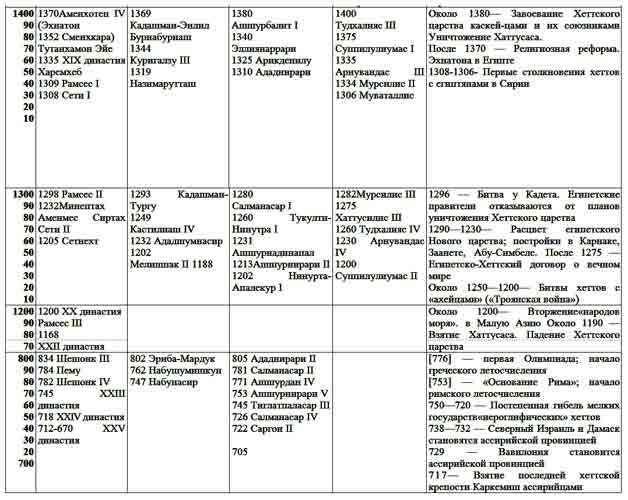
After their fall, the Sumerians left something that was picked up by many other peoples who came to this earth - Religion.
Religion of Ancient Sumer.
Let's touch on the Religion of the Sumerians. It seems that in Sumer the origins of religion had purely materialistic, and not "ethical" roots. The purpose of the cult of the Gods was not "purification and holiness", but was intended to ensure a good harvest, military success, etc. .e.), personified the forces of nature - the sky, the sea, the sun, the moon, the wind, etc., then the gods appeared - the patrons of cities, farmers, shepherds, etc. The Sumerians claimed that everything in the world belongs to the gods - the temples were not the place where the gods were obliged to take care of people - but the granaries of the gods - barns.
The main deities of the Sumerian Pantheon were AN (heaven - masculine) and KI (earth - feminine). Both of these beginnings arose from the primordial ocean, which gave birth to the mountain, from the firmly connected heaven and earth.
On the mountain of heaven and earth, An conceived the [gods] Anunnaki. From this union was born the god of air - Enlil, who divided heaven and earth.
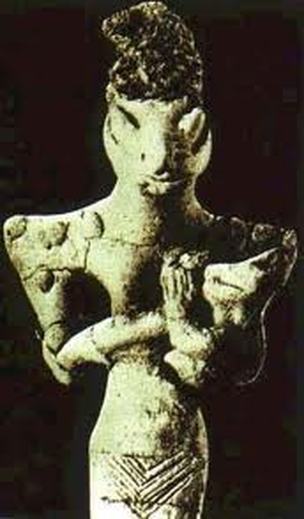
There is a hypothesis that in the beginning, maintaining order in the world was the function of Enki, the god of wisdom and the sea. But then, with the rise of the city-state of Nippur, whose god Enlil was considered, it was he who took the leading place among the gods.
Unfortunately, not a single Sumerian myth about the creation of the world has come down to us. The course of events presented in the Akkadian myth "Enuma Elish", according to researchers, does not correspond to the concept of the Sumerians, despite the fact that most of the gods and plots in it are borrowed from Sumerian beliefs. At first it was hard for the gods, they had to do everything themselves, there was no one to serve them. Then they created people to serve themselves. It would seem that An, like other creator gods, should have had a leading role in Sumerian mythology. And, indeed, he was revered, though most likely symbolically. His temple at Ur was called E.ANNA - "House of AN". The first kingdom was called the "Kingdom of Anu". However, according to the ideas of the Sumerians, An practically does not interfere in the affairs of people, and therefore the main role in "everyday life" passed to other gods, led by Enlil. However, Enlil was not omnipotent either, because the supreme power belonged to a council of fifty main gods, among which the seven main gods "who decide fate" stood out in particular.
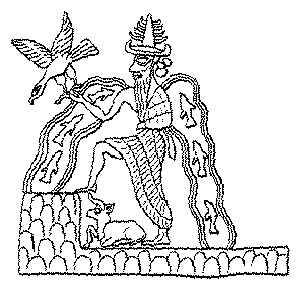
It is believed that the structure of the council of the gods repeated the "earthly hierarchy" - where the rulers, ensi, ruled together with the "council of elders", in which a group of the most worthy stood out ..
One of the foundations of Sumerian mythology, the exact meaning of which has not been established, is "ME", which played a huge role in the religious and ethical system of the Sumerians. In one of the myths, more than a hundred "ME" are named, of which less than half were able to read and decipher. Here such concepts as justice, kindness, peace, victory, lies, fear, crafts, etc. , everything in one way or another connected with public life. Some researchers believe that "me" are the prototypes of all living things, radiated by gods and temples, "Divine Rules".
In general, in Sumer, the Gods were like Humans. In their relationship there are matchmaking and wars, rape and love, deceit and anger. There is even a myth about a man who possessed the goddess Inanna in a dream. It is noteworthy, but the whole myth is imbued with sympathy for man.
Interestingly, the Sumerian paradise is not intended for people - it is the abode of the gods, where sorrows, old age, illness and death are unknown, and the only problem that worries the gods is the problem of fresh water. By the way, in ancient Egypt there was no concept of paradise at all. Sumerian hell - Kur - a gloomy dark underworld, where three servants stood on the way to where - "door man", "underground river man", "carrier". Reminds the ancient Greek Hades and Sheol of the ancient Jews. This empty space that separates the earth from the primordial ocean is filled with the shadows of the dead, wandering without hope of return, and demons.
In general, the views of the Sumerians were reflected in many later religions, but now we are much more interested in their contribution to the technical side of the development of modern civilization.
The story begins in Sumer.
One of the greatest experts on Sumer, Professor Samuel Noah Kramer, in his book "History Begins in Sumer" listed 39 subjects in which the Sumerians were pioneers. In addition to the first writing system, about which we have already spoken, he included in this list the wheel, the first schools, the first bicameral parliament, the first historians, the first "farmer's almanac"; in Sumer, cosmogony and cosmology first arose, the first collection of proverbs and aphorisms appeared, and literary debates were held for the first time; for the first time the image of "Noah" was created; here the first book catalog appeared, the first money (silver shekels in the form of "bullions by weight") were in circulation, taxes were introduced for the first time, the first laws were adopted and social reforms were carried out, medicine appeared, and for the first time attempts were made to achieve peace and harmony in society.
In the field of medicine, the Sumerians had very high standards from the very beginning. In the library of Ashurbanipal found by Layard in Nineveh, there was a clear order, it had a large medical department, in which there were thousands of clay tablets. All medical terms were based on words borrowed from the Sumerian language. Medical procedures were described in special reference books, which contained information about hygiene rules, operations, such as cataract removal, and the use of alcohol for disinfection during surgical operations. Sumerian medicine was characterized by a scientific approach to diagnosis and prescription of treatment, both medical and surgical.
The Sumerians were excellent travelers and explorers - they are also credited with the invention of the world's first ships. One Akkadian dictionary of Sumerian words contained at least 105 designations for various types of ships - according to their size, purpose and type of cargo. One inscription excavated in Lagash speaks of the possibility of repairing ships and lists the types of materials that the local ruler Gudea brought to build the temple of his god Ninurta in about 2200 BC. The breadth of the range of these goods is amazing - ranging from gold, silver, copper - and to diorite, carnelian and cedar. In some cases, these materials have been transported over thousands of miles.
The first brick kiln was also built in Sumer. The use of such a large furnace made it possible to fire clay products, which gave them special strength due to internal stress, without poisoning the air with dust and ash. The same technology was used to smelt metals from ore, such as copper, by heating the ore to over 1,500 degrees Fahrenheit in a closed furnace with a low oxygen supply. This process, called smelting, became necessary in the early stages, as soon as the supply of natural native copper was exhausted. Researchers of ancient metallurgy were extremely surprised at how quickly the Sumerians learned the methods of ore dressing, metal smelting and casting. These advanced technologies were mastered by them only a few centuries after the emergence of the Sumerian civilization.
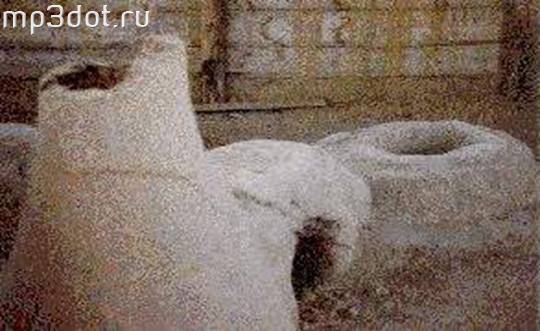
Even more amazing was that the Sumerians mastered the methods of obtaining alloys - a process by which various metals are chemically combined when heated in a furnace. The Sumerians learned how to produce bronze, a hard but workable metal that changed the entire course of human history. The ability to alloy copper with tin was the greatest achievement for three reasons. Firstly, it was necessary to choose a very accurate ratio of copper and tin (analysis of Sumerian bronze showed the optimal ratio - 85% copper to 15% tin). Secondly, in Mesopotamia there was no tin at all. (Unlike, for example, from Tiwanaku) Thirdly, tin does not occur in nature at all in its natural form. To extract it from the ore - tin stone - a rather complicated process is necessary. This is not a case that can be opened by accident. The Sumerians had about thirty words for various types of copper of various qualities, while for tin they used the word AN.NA, which literally means "Sky Stone" - which many consider to be evidence that Sumerian technology was a gift from the gods.
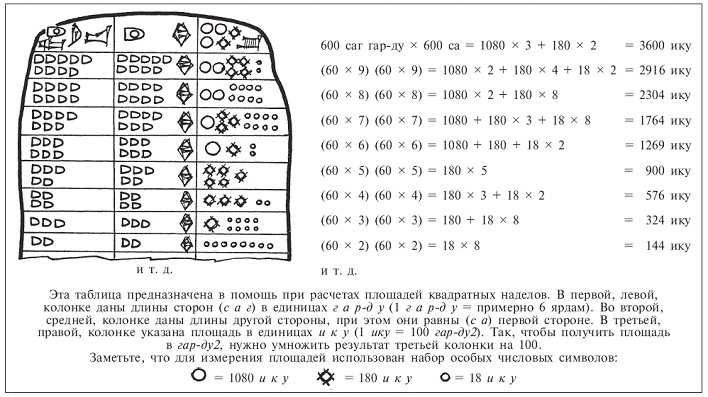
Thousands of clay tablets have been found containing hundreds of astronomical terms. Some of these tablets contained mathematical formulas and astronomical tables with which the Sumerians could predict solar eclipses, the various phases of the moon, and the trajectories of the planets. A study of ancient astronomy has revealed the remarkable accuracy of these tables (known as ephemeris). No one knows how they were calculated, but we may wonder - why was this necessary?
"The Sumerians measured the rising and setting of the visible planets and stars relative to the earth's horizon, using the same heliocentric system that is used now. We also adopted from them the division of the celestial sphere into three segments - northern, central and southern (respectively, among the ancient Sumerians -" the path of Enlil ", "the path of Anu" and "the path of Ea"). In essence, all modern concepts of spherical astronomy, including a full spherical circle of 360 degrees, zenith, horizon, axes of the celestial sphere, poles, ecliptic, equinox, etc. - all this suddenly originated in Sumer.

All the knowledge of the Sumerians regarding the movement of the Sun and the Earth was combined in the world's first calendar created by them, created in the city of Nippur - the solar-lunar calendar, which began in 3760 BC. The Sumerians counted 12 lunar months, which were approximately 354 days, and then add 11 extra days to get a full solar year. This procedure, called intercalation, was done annually until, after 19 years, the solar and lunar calendars were aligned. The Sumerian calendar was drawn up very precisely so that the key days (for example, the New Year always fell on the day of the vernal equinox). It is surprising that such a developed astronomical science was not at all necessary for this newly born society.
In general, the mathematics of the Sumerians had "geometric" roots and is very unusual. Personally, I don’t understand at all how such a number system could originate among primitive peoples. But you better judge for yourself...
Mathematics of the Sumerians.
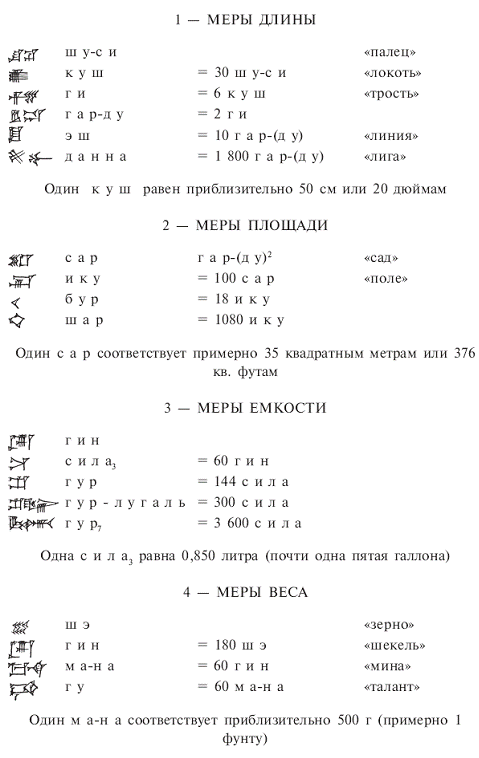
The Sumerians used the sexagesimal number system. Only two signs were used to depict numbers: "wedge" denoted 1; 60; 3600 and further degrees from 60; "hook" - 10; 60 x 10; 3600 x 10, etc. The digital notation was based on the positional principle, but if you, based on the basis of numbering, think that numbers in Sumer were displayed as powers of 60, then you are mistaken.
The base in the Sumerian system is not 10, but 60, but then this base is strangely replaced by the number 10, then 6, and then back to 10, and so on. And thus, positional numbers line up in the following row:
1, 10, 60, 600, 3600, 36 000, 216 000, 2 160 000, 12 960 000.
This cumbersome sexagesimal system allowed the Sumerians to calculate fractions and multiply numbers up to millions, extract roots and raise to a power. In many respects this system even surpasses the decimal system we currently use. Firstly, the number 60 has ten prime divisors, while 100 has only 7. Secondly, it is the only system ideal for geometric calculations, and this is the reason why it continues to be used in our time from here, for example, dividing a circle into 360 degrees.
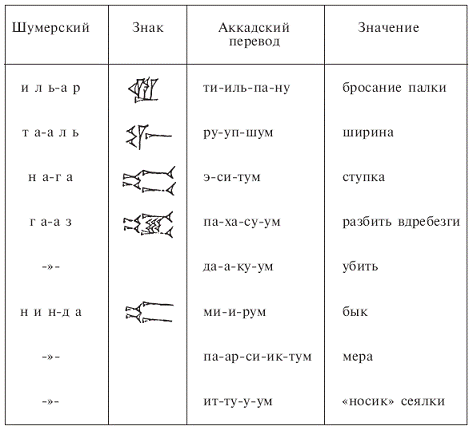
We rarely realize that not only our geometry, but also the modern way of calculating time, we owe to the Sumerian sexagesimal number system. The division of the hour into 60 seconds was not at all arbitrary - it is based on the sexagesimal system. Echoes of the Sumerian number system were preserved in the division of the day into 24 hours, the year into 12 months, the foot into 12 inches, and in the existence of a dozen as a measure of quantity. They are also found in the modern counting system, in which numbers from 1 to 12 are singled out, and then numbers like 10 + 3, 10 + 4, etc. follow.
It should no longer surprise us that the zodiac was also another invention of the Sumerians, an invention that was later adopted by other civilizations. But the Sumerians did not use the signs of the zodiac, tying them to each month, as we do now in horoscopes. They used them in a purely astronomical sense - in the sense of the deviation of the earth's axis, the movement of which divides the full cycle of precession of 25,920 years into 12 periods of 2160 years. With the twelve-month movement of the Earth in orbit around the Sun, the picture of the starry sky, which forms a large sphere of 360 degrees, changes. The concept of the zodiac arose by dividing this circle into 12 equal segments (zodiacal spheres) of 30 degrees each. Then the stars in each group were combined into constellations, and each of them received its own name, corresponding to their modern names. Thus, there is no doubt that the concept of the zodiac was first used in Sumer. The inscriptions of the signs of the zodiac (representing imaginary pictures of the starry sky), as well as their arbitrary division into 12 spheres, prove that the corresponding signs of the zodiac used in other, later cultures, could not have appeared as a result of independent development.
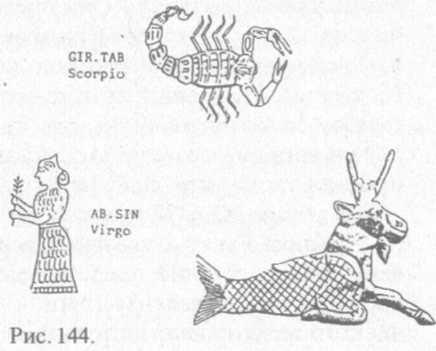
Studies of Sumerian mathematics, much to the surprise of scientists, showed that their number system is closely related to the precessional cycle. The unusual moving principle of the Sumerian sexagesimal number system focuses on the number 12,960,000, which is exactly equal to 500 great precessional cycles occurring in 25,920 years. The absence of any other than astronomical possible applications for the products of the numbers 25920 and 2160 can only mean one thing - this system is designed specifically for astronomical purposes.
It seems that scientists are avoiding answering the uncomfortable question, which is this: how could the Sumerians, whose civilization lasted only 2,000 years, notice and record a cycle of celestial movements that lasts 25,920 years? And why does the beginning of their civilization refer to the middle of the period between the changes of the zodiac? Does this not indicate that they inherited astronomy from the gods?
- In contact with 0
- Google+ 0
- OK 0
- Facebook 0

